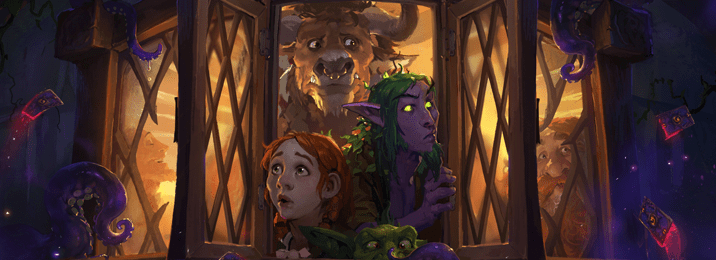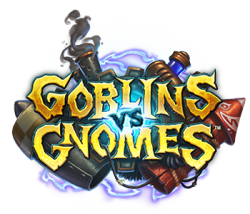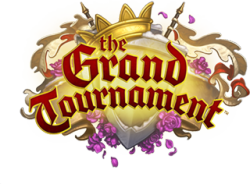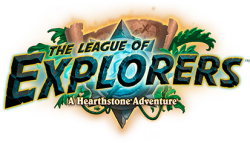
Hearthstone Sets and Card Pool – Part 2: Rarities, Class and Neutral Cards
by OtakuMZ - 8 years ago show comments
Introduction
In the first part of this series, I took a look at the Standard play mode card pool as well as speculations of its size in the years to come. Today’s work will analyze the individual card sets as well as the rarity distribution in each set. Furthermore, the ratio between class and neutral cards and its implication will be explored . For those who are new to the game, please read the following paragraphs. Veteran Hearthstoners may want to skip ahead and tune in at the start of the next section (Rarity – Drawing).
Sidenote: I will not talk specifically about golden cards in this article. Golden cards are awesome, don’t get me wrong. Me, for my part, I would like to have them all, but that’s a REALLY expensive task and not reasonably achievable for most of the player base outside of full time professional players or millionaires.
Sets
There are three different types of sets released so far: vanilla sets, adventures and expansions. The latter two each follow a specific theme which is represented by a core mechanic that dominates a good part of its cards, e.g. Deathrattle mechanic in Curse of Naxxramas.
Vanilla sets were part of the game from the get go: they consist of the Basic Set (BS), the Classic Set (CS) as well as the Reward Set (RS). I take the liberty to call the first two together the “Core Set” (Core). The Reward set is very small and consists of only two cards, Captain’s Parrot and Old Murk-Eye. The Basic Set has a special role, because it is totally free and available to all players once they reach Level 10 and it has no rarity. In Arena, these basic cards are treated rarity-wise equal to common cards and I will do likewise. As far as it is planned and outlined by Blizzard’s Team 5, the team that develops Hearthstone, this Core Set will stay forever while other sets rotate on a yearly basis.

Adventures released so far were Curse of Naxxramas (Naxx), Blackrock Mountain (BRM) and League of Explorers (LoE). Adventures so far have a relatively small card pool with 30 to 45 collectible cards. Despite their small size, Naxx and LoE had a huge impact on the meta, while BRM did so to a smaller extent. Adventures are normally released not all at once but over the course of several weeks with the opening of each wing of a single player campaign. So far there have been four to five wings in every adventure.



Expansions available are Goblins vs Gnomes (GvG), The Grand Tournament (TGT) and the soon-to-be-released Whispers of the Old Gods (OldGods). Expansions contain a large chunk of cards, ranging from 123 to 134 cards. They become available all at once and should therefore affect the meta heavily. Despite its size, the latest expansion, TGT, was rather unimpactful. It was hampered by the interesting but relatively weak core mechanics of Joust and Inspire.



Rarity – Drawing
There are four rarity types in cards packs opened: common, rare, epic and legendary. In the table I copied from gamepedia.com you can see the individual probabilities to draw each rarity. More statistics, also on golden cards, are available if you follow the link.

Table 1: Probability of rarities in Hearthstone. Source: hearthstone.gamepedia.com
We do also know that you are guaranteed to get one Legendary card every 40 packs, counted individually for every card pack type. There is more info on this so called “pity timer” written by Ben Barrett on PCGamesN.com. The data was first made public by Pi143 and briel_hs via their reddit posts (link-Pi143 & link-briel_hs). The bekow figure (fig. 1) shows that up until opening 32 packs, getting a legendary involves a lot of luck. Starting from there, the pity timer kicks in and your chance toet a card with an orange crystal is raised exponetially. In the 40th pack it raised to 100%, a guarantted draw of one legendary in your 5 cards per pack if you were unlucki in the 39 boosters before.

Figure 1: “Hearthstone packs are rigged in your favour!” Source: PCGamesN.com written by Ben Garrett; data based on reddit posts by briel_hs and Pi143
Rarity – Distribution
In Figure 1 and Table 2 below, we can see that the distribution of rarities is approximately 50% commons, 25% rares and 12.5% (distribution common : rare : epic : legendary =equals approx. 4:2:1:1). This means we have roughly the same amount of rares as epics and legendaries combined and about double the number of commons than rares. If we take a look only at adventures and expansions, the amount of commons is a little lower with 40% commons, 30% rares, 15% epics and 15% legendaries (approx. 2.5:2:1:1). For a more graphical view take a look at fig. 1.


Figure 2: Relative rarity distribution compared in different pairings of sets.
Figure 3: Relative rarity distribution of each set compared to one another, order Vanilla – Expansions – Adventures. The order does not represent the order of release. Absolute number of cards of each rarity in each set is displayed in the table below the graph.
Figure 3 shows the relative distributions of rarities in each individual set. Leaving aside the Reward Set and Basic Set, which are special in their own way, expansions and Classic Set show a very similar behavior. Adventures on the other hand show more variation: BRM contains no epics while Naxx favored commons over rares. Figures 4 and 5 display the absolute number of cards each set contains color-coded for rarities equal to the prior figures. The next two graphs individually compare only expansions and adventures (fig. 6 and 7). In these images, we can even better discriminate the differences and similarities of the individual sets and set types. Finally, figures 8 and 9 show the cumulative and absolute numbers of each rarity in Standard and Wild format as they developed over time and a good approximation where we will be at the start of “the Year of the Kraken” which starts late April or early May.


Figures 4 and 5: Rarity distribution in all subsequent sets ordered Vanilla – Expansions – Adventures. Two ways of looking at it: column graph for each set with single column plot (4) and multiple column plot.


Figures 6 and 7: Absolute rarity distributions for each individual sets in different pairings to make the comparison easier: expansions (6) and adventures (7).


Figures 8 and 9: Total card pool available at time of release for each subsequent set in for Standard (8) and Wild (9) until Whispers of the Old Gods release.
Pew, that’s a whole lot of data and graphs to digest. But wait, there is more!
Class and Neutral Cards
One aspect this article did not highlight so far is the ratio of class cards to neutral ones. If we take a look at figure 10, we can see that the distribution of Class to Neutral cards is roughly 60% compared to 40%. This is true for both Standard and Wild, as well as most sets released so far, with the exception of Naxx (30:70), Reward Set (100 % neutral) and to a lower extent the Basic Set (70:30). This struck me as odd. I did not realize until now, that there are more class cards than neutral ones. Taking into account, that there are nine classes to choose from, it makes sense, because we have to divide the class cards by this amount. After a quick calculation, this leaves each class in Standard to choose from 48 (433 divided by 9) and 287 neutral cards, which results in a ratio of approx. 1:6 (class:neutral). You find the related graphs in relative and absolute numbers in figs. 10 and 11 below with fig. 11 showing also the per-class-count. For a better comparison of expansions and adventures by themselves, there are separate plots for those in figures 12 and 13.


Figures 10 and 11: Relative (10) and absolute (11) numbers of class and neutral cards in all sets.


Figure 12 and 13: Comparisons of class cards vs neutral cards in expansions (12) and adventures (13).
Comparison to MTG and Conclusion
Ok, now what do we do with all that information? Regarding sets in general, there is a minor point to notice. As you saw, Curse of Naxxramas was a special set, not only by its ridiculous power level but also in its sheer distribution of cards. Being the first set, that is not all too unexspected. In general though, in adventures, Blizzard seems to take more liberty in distribution of rarities and ratio of neutral to class cards.
Regarding rarities, there is no real conclusion I am able draw. There seems to be a plan at what percentage each rarity should be overall. ostly, the classification into common, rare and epic seems to be related to balance Arena IMHO. Legendaries are represented in a high percentage, equal in numbers to epics, which is mostly a cost issue as they will likely eat most of your dust. Well, some may call Blizzard greedy, but In general, Hearthstone is considered a relatively cheap trading card game. At least IMHO the last statement is not totally true. Anyway, a lot of legendaries are garbage and not worth crafting anyway, unless you are a collector.
In regard of class and neutral cards, I want to go back to my comparison with Magic the Gathering™ (MTG), I already started in part 1. I know that the whole game design of MTG is very different to the one Hearthstone, with MTG allowing the combinations of colors whereas the combination of classes is not possible in Hearthstone. Also there is no steady increase in mana pool but the “land-mechanic” with no maximum mana cap. Also more cards are allowed per deck, aminimum of 60, but lands take away a good amount of that bigger deck’s space, normally around 15-20 of these slots. Finally, 4 copies of each card are allowed in contrast to two. Nevertheless, I will risk a comparison, despite the differences.
In MTG, there are 5 colors to pick from. Atop, there are artifacts, which serve as the neutral component. Artifacts account for roughly 13,9% of all cards released so far (1902 artifacts/13651 total cards released=0,1933= 13,933%). The actual Standard format in MTG contains 1336 cards and will contain 1541 at the end of the current cycle (please correct me if my calculations are wrong). 75 cards are basic lands which have to be substracted, resulting in 1261 and 1466 cards respectively. If we apply the above mentioned artifact count, there should be roughly 176 and 204 artifacts respectively which leaves us with 1085 and 1262 colored cards respectively.
Divided by five colors, the result is 217 cards/color in Standard MTG right now and 252 cards/color at the end of the actual cycle. Adding the number of artifacts, we get the amount of cards you can choose from in a single-colored deck, 393 and 456 cards respectively. As far as I know, single- and dual-colored decks are the most prevalent. For a dual-colored deck, the values increase to 610 and 708 cards respectively. Going forward with the comparison, I take the mean values of the above mentioned numbers to facilitate comparison: a mean of 501 card choices for a single-colored deck and 582 for a dual-colored deck respectively in MTG.
Returning to Standard in Hearthstone, despite 720 cards available in the whole format, you “only” have a mean of 335 choices per class vailable at the start of the Year of the Kraken, 48 class cards and 287 neutral ones. At the end of that cycle, you can choose from approx. 412 cards to assemble your deck for each class (compare table 2). Again, to facilitate comparison, we calculate the mean number: mean card choices for Hearthstone in Standard: 374 cards.

Table 2: Per class card pool estimations for the Year of the Kraken (YotK)
Comparing Hearthstone to MTG, choices in Hearthstone are 25% (single-color deck) and 36% (dual-color deck) lower. This might be blessing and curse alike for multiple reasons. On the one hand, more choices allow for more complex deck building. Also the cards itselves tend to have more complex card texts with extended possibilities in MTG. On the other hand, more complex game mechanic can lead to frustration. With Hearthstone being aimed also at a casual audience, the lower card count seems reasonable as well as the complicated card text. For sure, the hardcore base of players feels differently about that, but the majority of the player base might agree. Me myself, I count myself more on the hardcore side, being one of the less than 1% that own every single card released, I am ok with the state of the game and the varitation it delivers. As long as the sets released shake up the meta enough, and the time in between sets do not stretch out as much as we have seen it with LoE, things are fine. Don’t get me wrong, LoE was a fantastic set of cards, but the time until Whispers of the Old Gods will be released is just to long.
ANother point pro Hearthstone is as follows. The past has shown, not only the number of cards are making the impact. TGT cards, despite accounting for 132, did not have by far the effect on the meta as the 45 cards of LoE. More than pure numbers, the card design is what matters most. Yes indeed, I would like to see more cads, especially class cards to give each hero an even more unique fell, but apart from that, other things are more important than all of that. The fact that I am able play Hearthstone without traveling and arranging meetings with other people I know or don’t know is really important. Being a full time employee to earn my living, there is a limited pool of free time to actually being able to enjoy the game. With hearthstone beeing on mobile atop of being online, I can squeeze in a few games whenever I want without needing to arrange anything prior to playing. Yes, there is MTG Online and the casual MTG Planeswalker, but neither has the same feel as the print version. With Hearthstone, on the way to work, while waiting for an appointment, during my break at work or whenever I like, there is a room by the hearth the innkeeper is offering me – on my phone or my tablet without the need for a clunky PC. This is the liberty that in the end is drawing a lot of players to the game. With this ode to Hearthstone (no, I do not receive anything for writing this by BLizzard 😉 ), I will conclude this two-part mini-series. I hope you liked it.
Good luck and have fun and don’t let the Old Gods corrupt you!